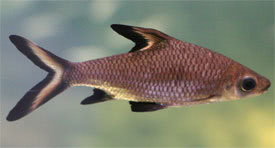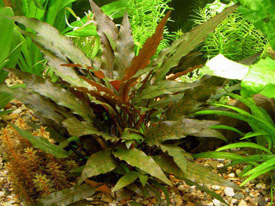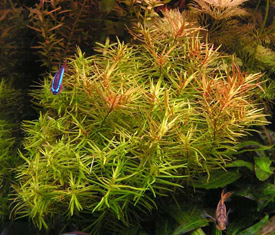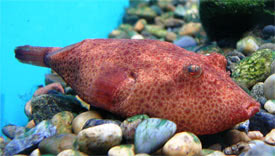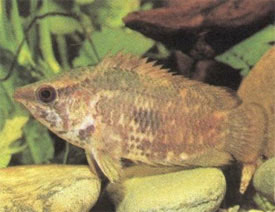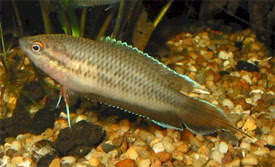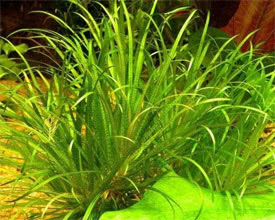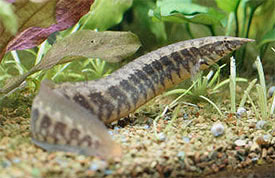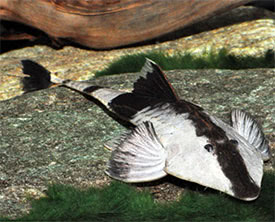
 Magyarul / Hungarian
Magyarul / Hungarian
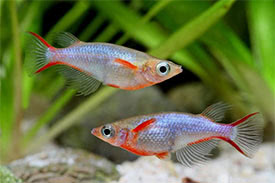
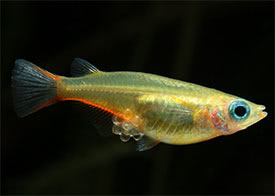

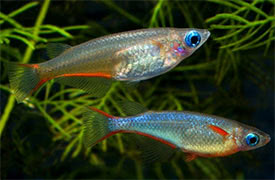
- Scientific name: Oryzias woworae
- Synonyms: -
- Common name: Daisy's Ricefish
- Group: Other fishes
- Habitat: Asia; Indonesia, Southeast Sulawesi on the island of Muna.
- Size: 2.5-3 cm
- Biotope: Inhabits the karstic freshwater streams of the island that mostly flowing under forest cover with a substrate of mud and sand and patches of leaf litter.
- Social behavior: Very peaceful schooling fish, but because of their small size they are not recommended for a general community tank. When breeding is the purpose they should be kept alone, and do not mix with other Oryzias due to the potential of hybridisation.
- Diet: Omnivorous; it can be fed with good quality dried foods of suitable size, and live foods. Adult fish also grazing algae from solid surfaces.
- Breeding: Quite easy
- Tank: Minimum 30 litres
- Population: 8-10 fish for 50 litres
- Decoration: These fish display their best colors when kept in a tank that resembles to their natural habitat. Use some tree roots and branches plus some dried leaves over the sandy substrate. They also look good in a densely planted aquarium.
- Temperature: 23-27 °C
- pH: 6-7.5
- Hardness: 5-15 NK°
- Lifespan: 3-4 years
Description: Daisy's Ricefish was discovered in 2007 and was first appeared in the aquarium trade shortly after being described to science, and in the first times it was quite expensive fish. It is the smallest known Oryzias species from Sulawesi. The fish got its scientific name after Daisy Wowor who first collected and photographed the fish in the field. Males have a steel blue body that framed with bright red stipes on the ventral surface of head and body, on the pectoral fins, on the caudal peduncle, and on the dorsal and ventral portions of caudal fin. Females also have these reddish outlines, but they have yellow body color.
Mature males are more colorful, and have longer dorsal and anal fins, while females are more plumper. Oryzias woworae are quite easy to breed and pretty prolific, as females can produce 10-20 eggs every few days. They usually spawn in the morning hours. At this time the body color of the males become darker, and they start to defend small territories against other males and will try to entice females there. The adhesive eggs are expelled as a single mass and fertilised simultaneously by the male. The eggs continue to hang from the genital pore of the female for a period before being deposited among aquatic plants. So place a few clumps of fine-leaved aquarium plant such as Java moss to their breeding tank. The eggs hatch in 1-3 weeks which depends on water temperature. Adult fish usually ignore the eggs, but they will eat the free-swimming fry, so the eggs should be placed in a separate aquarium, and when the fry become free-swimming feed them with small live foods. When housing juveniles of different ages together, the larger fry can predate on the smaller ones.

















































